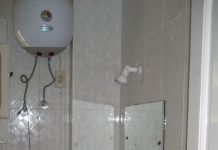There can occur a situation when water damage caused by leaky pipes can affect your items at home. These include all your electronic devices, wooden and metallic furniture, textiles, and paper products. It can be a pain to recover all these household items once damaged by water. Here is a guide on electronic, textile, and cabinet repair and how to recover water-damaged items, depending on the material of an item damaged. Let’s see the tips to recover water damaged items.

15 Tips on How to Recover Water Damaged Items
For Your Electronics Gadgets
1. Prioritize your own safety first!
Your personal safety is the utmost priority in these emergency water damages. Electronics, in particular, can be hazardous when combined with water. You may experience a mild electric shock to severe electrical burns that may even result in death.
Therefore, it is essential to observe caution when handling electronics damaged by water. Better, you may not have to fix your electronics by yourself and hire experts to repair it for you.
2. Turn off the power from the device
If you choose to tinker with your electronics, you first need to stop the power to the device. If you do, you will prevent further injury to yourself in repairing the wet device.
You likewise need to remove the sources of electricity, such as batteries and power connections. Removing the power source will make sure that your device will not short-circuit. If you prevent your device from experiencing a short circuit, you will have better chances of recovering it.
3. Rinse the electronic parts of large devices
For bigger electronic devices, you may need to rinse them off with clean water. Doing so won’t cause further damage to the already-soaked components. Instead, rinsing can help remove all these salt and mineral deposits.
4. Dry your electronic device
Many small electronic devices, such as handheld phones, won’t need further rinsing. After all, they have parts that are so small that minute sediments will not affect their performance much. What works best is to dry your gadget to remove excess moisture. Wiping with a cloth or cotton, and even using a hairdryer on a cool setting is an ideal way to let it dry.
Check Also: 7 Tools That All Electronics Labs Must Have
For Your Furniture
5. Dry out wooden furniture
Many furniture is made of wood, such as tables, chairs, and cabinets. A lot can go wrong if the wooden furniture faces water damage. For instance, molds and mildews may occur. The wet parts may also shrink and deform.
The best tip for wooden furniture and cabinet repair is to let it dry slowly. Leave it outside in the sun’s heat if the weather is good. Alternatively, you may leave it in a room with good air circulation and warm temperature.
6. Remove white and black spots
There may be times when molds and mildews have already occurred. In these scenarios, you need to remove the white and black spots. First, remove the coating finish from the wooden furniture, clean the mildew with a bleach solution, and apply a new layer of finish.
7. Remove corrosion from metal furniture
For furniture made of metal, your biggest rival in a water damage situation is corrosion. It starts as small hints of rust and can damage your entire furniture if you leave it unchecked.
The best way to remove these rusts from your furniture is to clean them immediately. You may use effective cleaning agents specially designed to keep rust away. Alternatively, you can use home remedies such as white vinegar or baking soda.
8. Choose cabinet repair or furniture replacement
Some furniture may be of more importance to you. For instance, they can be costly or may hold sentimental value to you. Also, you will need to consider the cost of repairing the damaged furniture. These factors affect your decision to either repair or replace the damaged item.
Check Also: Kids Bedroom Furniture: Cool Bedroom Decor Your Kids Will Love
For Your Textiles
9. Sort out salvageable from non-salvageable textiles
All your textiles, from clothing to mantelpieces and carpets, are prone to water damage. When they get damaged, some should be better off discarded. For instance, textiles with extreme visible discoloration and shrinkage may not be reversible. Textiles contaminated with sewage spills, oils, and other toxic chemicals are also better to be thrown away than pose health risks to you.
10. Wash textiles
For the textiles that are worth salvaging, they must be thoroughly re-soaked with clean, flowing water before washing them to remove dirt. Use warm water and heavy-duty detergent to remove the stains from the textile thoroughly. It must be done repeatedly before drying until all stains go away. Drying them, unfortunately, can set the stains, making them impossible to remove.
11. Dry and iron textiles
After thoroughly washing all the stains, drying, or even ironing them can help remove all the germs and bacteria. However, keep in mind that all fabric dries at different temperatures. Some can even shrink if left on an automatic dryer.
For Your Paper Items
12. Distinguish thoroughly-soaked from partially-wet paper
Paper products may need extra work to recover them based on the intensity of the water damage. For instance, you should avoid opening books that are thoroughly soaked in water. Instead, allow them to drain until they do not drip water, then proceed to dry them.
13. Rinse off dried dirt from the paper
If the paper gets dirtied by flood or sewage water, you need to rinse them off before you let them dry. If you are iffy to sink them in a bucket of clean water, then spraying them with clean water will work just as fine.
14. Air-dry thoroughly soaked and partially-wet paper
Air-drying paper products are perhaps the most cost-effective way to recover soaked paper products and books. Mildly-soaked paper can get exposed to the sun. If this is not possible, keeping it in a well-ventilated and dry room is also a good alternative.
15. Freeze-dry large quantities of thoroughly soaked paper
Last, but not the least, the most effective way to dry paper products is through freeze-drying. In this method, you freeze and sublimate into vapor all the moisture from the paper products. Doing so will minimize the damage from the inks and prevent the paper from curling. However, freeze-drying them can be costly and is ideally done in larger quantities.
Hope this article gives some better tips that you to recover water damaged items.










































